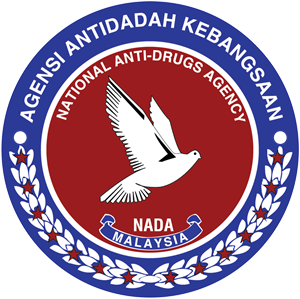Chronology of Drugs Eradication in Malaysia
1952
The government’s initial efforts in handling drug issues and problems were through legal action by enforcing the Dangerous Drugs Act 1952. However, implementation of these laws was carried out by government agencies separately.
1972
The Central Narcotics Bureau, under the purview of Ministry of Law was established to control and monitor drug problems through enforcement, prevention, coordination and research programme.
1975
In view of the drug problem that was becoming more serious, in 1975 the government established the Cabinet Committee on Drugs which was chaired by the Deputy Prime Minister. The functions and responsibilities of this committee were to review and determine policies on the usage, prevention and eradication of drugs.
1978
The Executive Action Unit (UBE) was established in 1978 and chaired by the Deputy Minister of Home Affairs. The function of this unit was to coordinate the implementation of all decisions and declarations made by the UBE pertaining to the control and prevention of drugs.
1983
On 19 February 1983, the government declared drugs as the country’s number 1 enemy as the drug problem had become increasingly dangerous and pose a threat to national security.
The Drug Dependants (Treatment and Rehabilitation) Act was established.
Pusat Serenti as a One-Stop Centre was established.
1983
Further to such development, the Cabinet, in its meeting on 22 June 1983, approved the establishment of the Anti-Drugs Committee (JKAD) and the Anti-Drugs Task Force (PPAD) accountable to the National Security Council in all aspects of the drug problem. Consequently, the Cabinet Committee on Drugs and other anti-drugs committees established at federal, state and district levels were abolished.
1995
The Ministry of Home Affairs made a proposal to the Prime Minister to combine all agencies/units responsible for handling drug problems into one single agency. The agencies involved were the Drug Treatment and Rehabilitation Division of the Ministry of Home Affairs; the Anti-Drugs Task Force (PPAD) of the Prime Minister’s Department; the Smuggling Prevention Unit of the Prime Minister’s Department; Anti-Drugs Branch of the Royal Malaysian Police; the Pharmaceutical Division of the Ministry of Health; the Special Unit on Drugs of the Ministry of Education; and the Narcotics Unit of the Royal Malaysian Customs Department.
1996
The government agreed to establish the National Drug Council to replace the Anti-Drugs Committee to prevent and control drug problems in the country. This council was chaired by the Minister of Home Affairs with the Deputy Minister of Home Affairs as the Deputy Chairman. The government also combined the Drug Treatment and Rehabilitation Division of the Ministry of Home Affairs and the Anti-Drugs Action Team of the Prime Minister’s Department into a single agency called the National Drugs Agency. It is the function and responsibility of the National Drugs Agency to provide secretariat services to the National Drugs Council and to become one of the implementing agencies in the fight against drugs, in addition to twenty (20) other government agencies.
On 11 June 1996, the National Drug Policy was approved by the National Drug Council, encompassing education, prevention and publicity; law enforcement; treatment and rehabilitation; and international cooperation activities.
2004
The Cabinet, in its meeting on 28 January 2004, agreed to establish the Cabinet Committee on Drugs Eradication (JKMD) as the highest body in the country, replacing the National Drug Council. Under (JKMD), the following complementary machinery was formed: the National Drug Eradication Action Council (MTMD), the Law Enforcement Committee (JPU), the Treatment and Rehabilitation Committee (JRP), the Education on Drug Prevention and Publicity Committee (JPPP), the State and District/Division MTMD.
The rationale behind the establishment of JKMD and the implementation of coordinating machinery was based on the following factors:
– The integrated involvement of government agencies, NGOs and the private sector, as well as the solid support of the general public;
– The challenges in realising a drug-free Malaysia by 2015; and
-. Political will and commitment
2004
On 30 December 2004, consistent in line with the surrounding challenges and long-term needs, the government approved the National Anti-Drugs Agency Act 2004 as well as the establishment of the National Anti-Drugs Agency (NADA). NADA which is given the mandate and main function to prevent, detect, arrest, enforce, investigate and prosecute in terms of prevention, detecting, arrest, enforcement, investigation and prosecution of offenders involved in drug offences, as well as to provide treatment and rehabilitation of drug addicts.
This National Anti-Drugs Agency Act 2004 empowers NADA to conduct special preventive arrests on those who have any connection to any activities related to or which involve drug trafficking. In addition, NADA also has the power in forfeiture of property related to any activity in connection with drug offences, as well as collection of security information pertaining to drug activities.
2007
The Enforcement Division was established.
2009
The One-Stop Centre was rebranded and renamed as PUSPEN (Narcotic Addiction Rehabilitation Centre).
2010
Transformation of Treatment and Rehabilitation which focused on providing services to Malaysian with drug problems who seek treatment voluntarily.
– Institution-based rehabilitation: Cure & Care Clinic and Cure & Care Rehabilitation Centre (CCRC)
– Community-based rehabilitation: Cure & Care Service Centre (CCSC) and Caring Community House (CCH)
– Career and vocational training programme: Cure & Care Vocational Centre (CCVC)
– Preventive Drug education: Education and public awareness (SHEILD, TEKAD, SMART), NADA SKUAD
– Detection and monitoring
Core Business Transformation through ICT: Client Profiling System (MyAADK)
2017
On 10 March 2017, the Cabinet approved the 2017 National Drug Policy which was drafted to ensure the well-being, health, dignity and national security.
This policy draw a comprehensive framework which is in line with the effort to prevent, treat, rehabilitate, enforce laws, harm reduction of drug addiction. Additionally, it also incorporates international initiatives.
This policy is also a reference and guide for all drug enforcement agencies, government agencies and NGOs to collaborate/join force in reducing the supply and demand of drugs in Malaysia.







 Users Today : 373
Users Today : 373 Total Users : 2599590
Total Users : 2599590